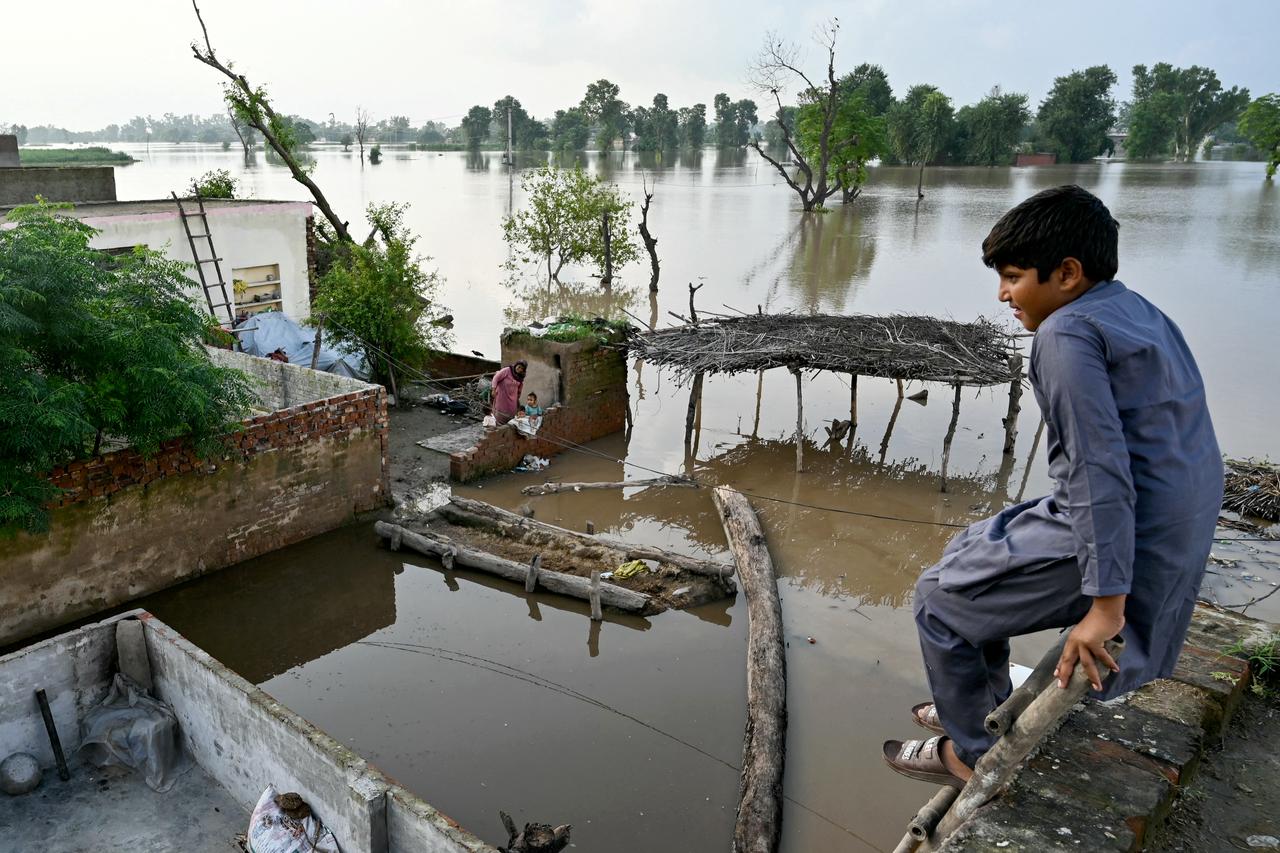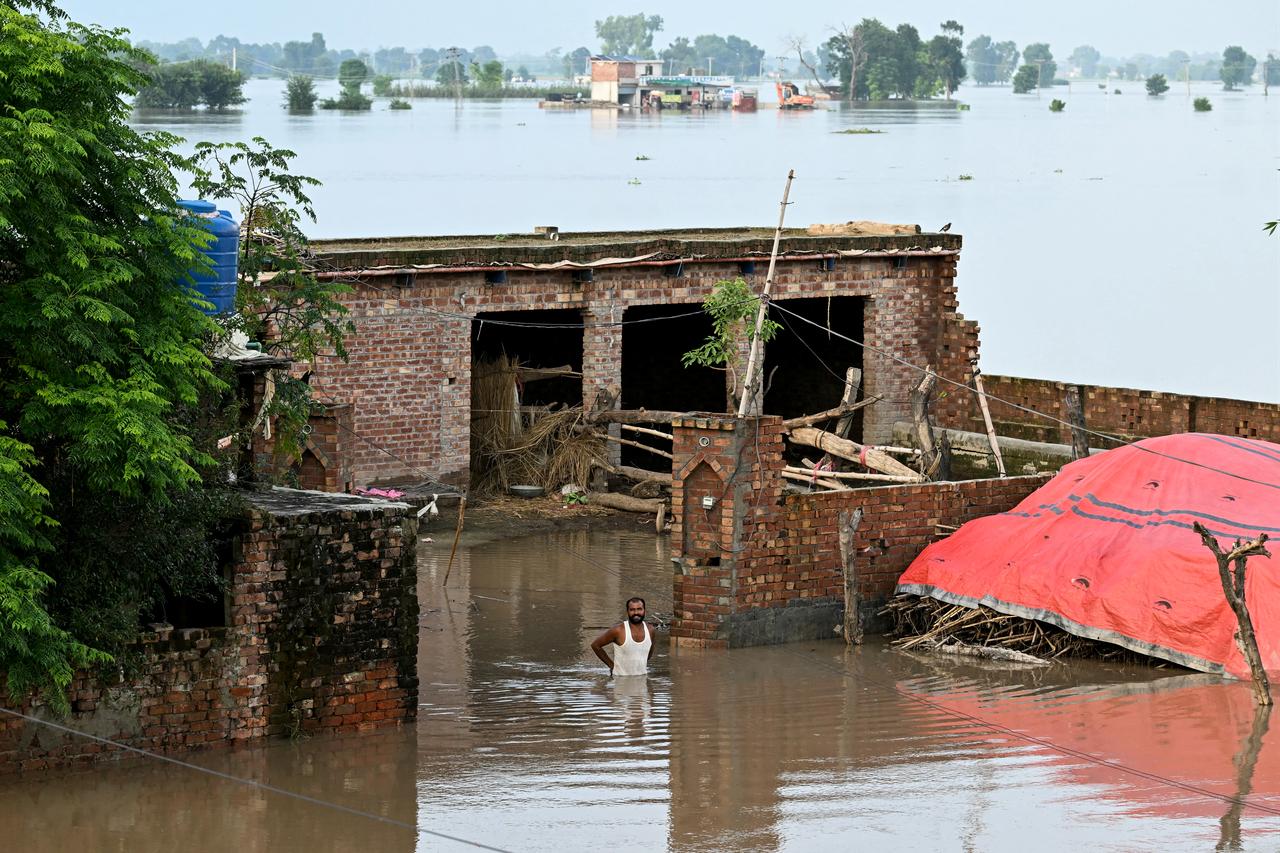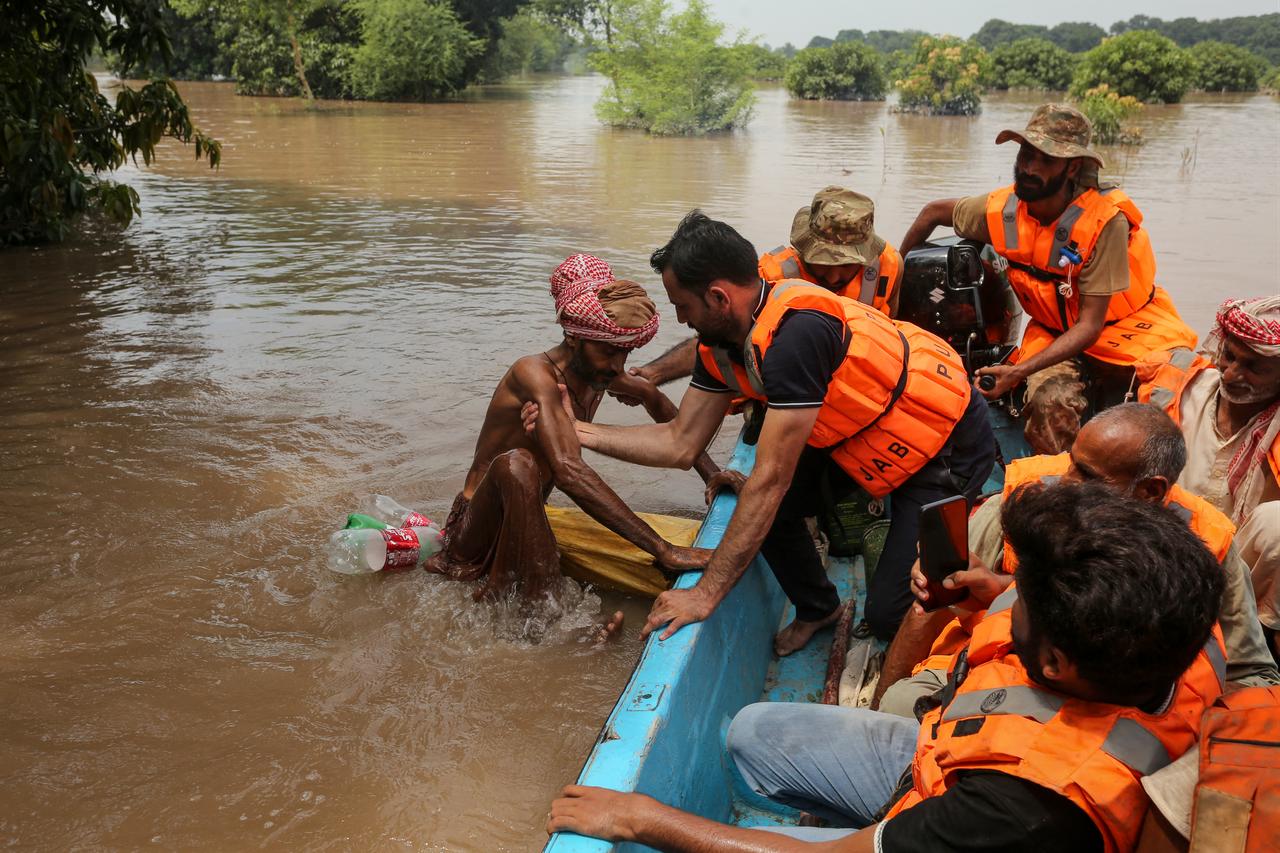
Pakistan is facing one of its worst flooding disasters in decades, as relentless monsoon rains and rising river levels have forced the evacuation of thousands and affected millions across the country.
In the eastern Punjab province, authorities reported that 25,000 people have been evacuated from high-risk areas, particularly around Jalalpur Pirwala, due to the flooding of the Chenab, Ravi and Sutlej rivers.
Punjab Disaster Management Authority (PDMA) Director General Irfan Ali Kathia confirmed that the evacuation efforts have been ongoing since yesterday, with all planned relocations successfully completed.

The floods have impacted over 4.1 million people across more than 4,000 villages in 25 districts of Punjab. Kathia noted that since Aug. 26, at least 56 people have lost their lives due to the floods in the province.
Officials highlighted that this is the first time in Pakistan’s history that the Chenab, Ravi, and Sutlej rivers have simultaneously overflowed, submerging thousands of villages and affecting millions. Nabeel Javed, another Punjab official, reported on Sept. 4 that the total number of people displaced in the province since the start of the floods had reached 1.8 million.
At the national level, the Pakistan National Disaster Management Authority reported that the ongoing monsoon rains, which began on June 26, have caused 910 deaths across the country so far. Authorities describe this disaster as the largest since the 2022 floods, which killed over 1,700 people, submerged one-third of the country, and caused $32 billion in damages.
Humanitarian agencies continue rescue operations and are providing shelter, food, and medical aid to those affected. With millions displaced and thousands of homes destroyed, officials warn of a prolonged crisis and emphasize the urgent need for coordinated relief efforts.

The catastrophic floods sweeping across Pakistan have not only caused widespread devastation but are also triggering a significant internal migration crisis. As communities in rural areas face the destruction of homes, farmland and infrastructure, many are being forced to relocate to urban centers in search of safety and livelihood.
The influx of displaced individuals into cities like Karachi, Lahore, and Islamabad is straining urban infrastructure and resources. Many migrants are settling in informal settlements, where access to clean water, sanitation and health care is limited. This overcrowding exacerbates existing urban challenges and poses significant public health risks.
Experts warn that if climate change continues to exacerbate the frequency and intensity of such disasters, Pakistan may face an ongoing cycle of displacement and migration, with rural communities bearing the brunt of the impact. Addressing the root causes of these floods and investing in resilient infrastructure are critical steps toward mitigating future displacement and ensuring the stability of both rural and urban populations.